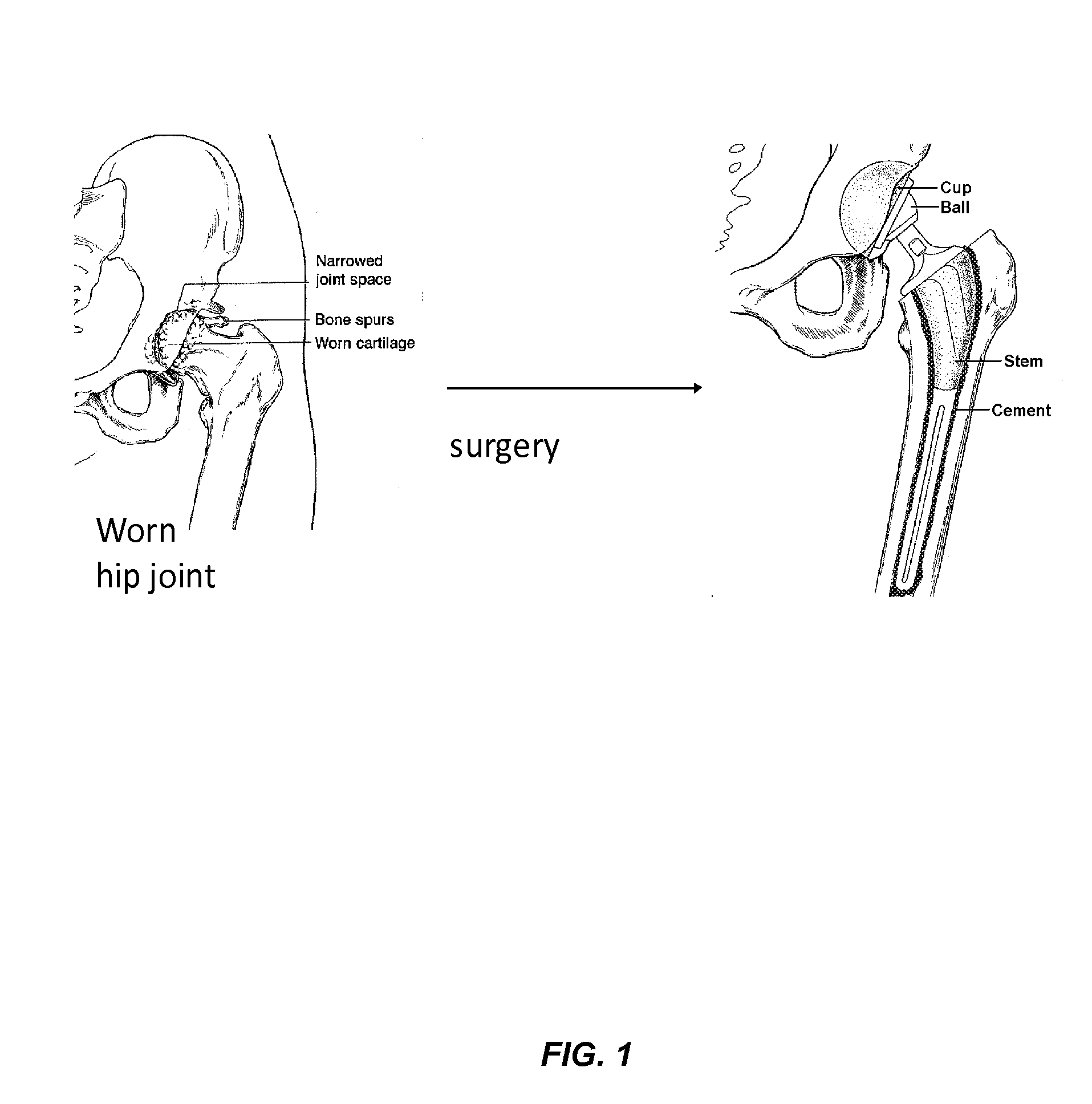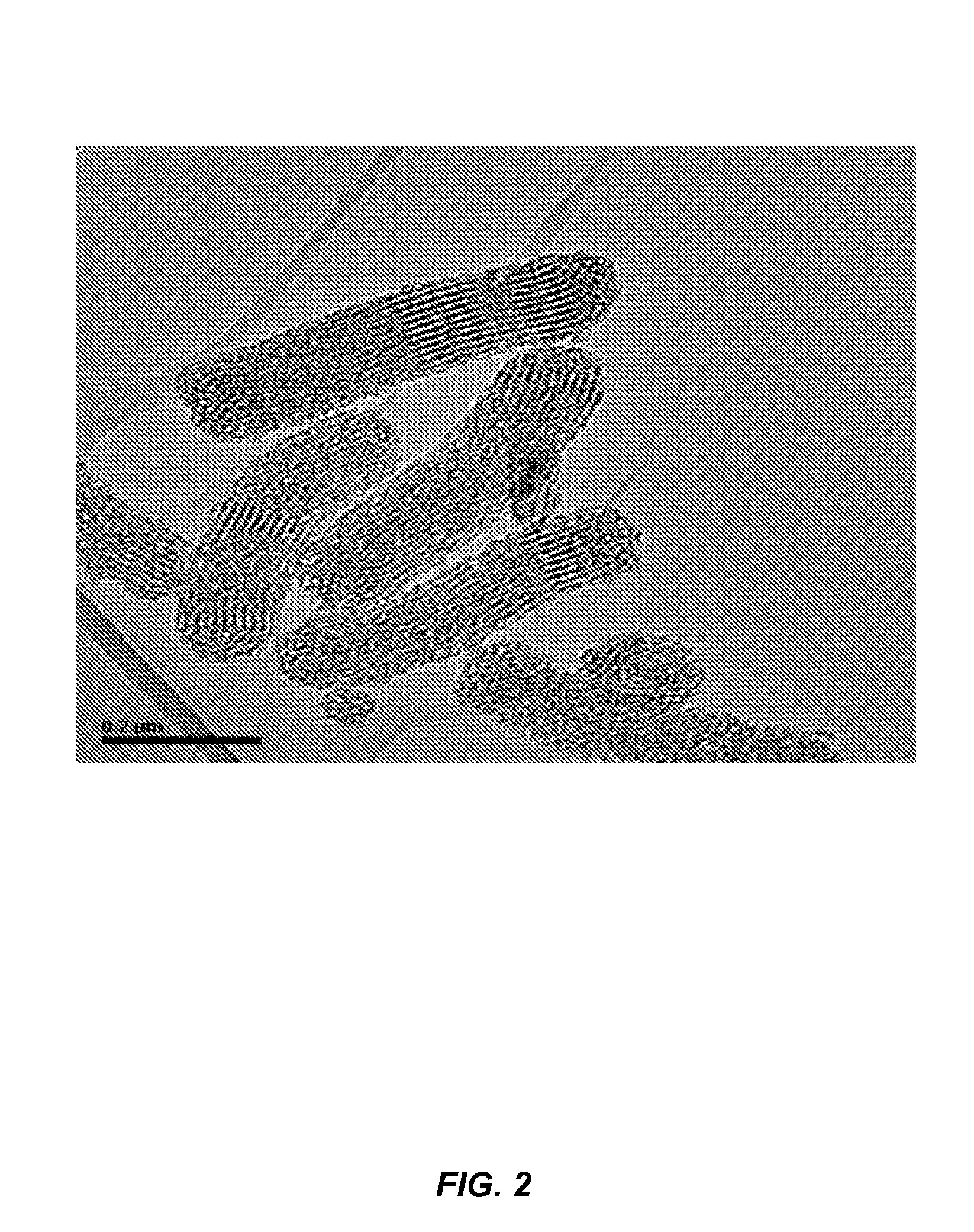Nanostructured material formulated with bone cement for effective antibiotic delivery
a technology of nanostructured materials and bone cement, which is applied in the direction of prosthesis, drug composition, pharmaceutical packaging, etc., can solve the problems of severe functional disability, high antibiotic release, and high cost of infections in terms of quality of life and public health expenditure, so as to prevent postoperative osteomyelitis, improve antibiotic efficacy, and reduce antibiotic release.
- Summary
- Abstract
- Description
- Claims
- Application Information
AI Technical Summary
Benefits of technology
Problems solved by technology
Method used
Image
Examples
example 1
Preparation of Mesoporous Silica Nanoparticles
[0124]Mesoporous silica nanoparticles (MSN) were prepared using fluorocarbon-surfactant-mediated synthesized procedure (see U.S. patent application Ser. No. 11 / 631,342; Gao et al., J. Phys. Chem. B, 113:1796-1804 (2010); Han Y and Ying J Y., Angew. Chew. Int. Ed., 44:288-92 (2005)). Typically, 0.5 g of Pluronic P123 (triblock polymer) and 1.4 g of FC-4 (fluorocarbon surfactant) were dissolved in 80 ml of HCl solution (0.02 M), followed by the introduction of 2.0 g of tetraethoxysilane under stirring. The solution was continuously stirred at 30° C. for 24 h and then transferred into a polypropylene bottle and kept at 100° C. for 1 day. The resultant solid was recovered by centrifuging and washed with deionized water twice, and then dried at 55° C. for 12 h. To remove the template molecules, the material was heated from room temperature to 550° C. at a heating rate of 2° C. / min and followed by calcination (thermal decomposition) in air for...
example 2
Preparation of Mesoporous Material Incorporated Antibiotic Bone Cements by Method 400
[0125]This example illustrates a method for impregnating one or a plurality of antibiotics in MSN and embedding antibiotic loaded nanoparticles into commercially available PMMA-based bone cement (see Table 1). Gentamicin was loaded onto MSN by wet impregnation. Typically, 0.40 g of gentamicin was dissolved in 3 ml deionized water. In one experiment, 0.60 g of MSN powder was impregnated with gentamicin solution under stirring and aged for 24 h. The mixture was dried under vacuum at room temperature under vacuum for 48 h. The dried gentamicin loaded MSN was ground to fine powder and a certain amount of gentamicin-MSN powder was mixed with commercial bone cement solid powder by manual grinding. The samples of antibiotic loaded bone cement were prepared by mixing the powder with the liquid monomer in a ratio of 2g / ml in a bowl in a laminar flow hood, in accordance with the manufacture's instruction. Mon...
example 3
Preparation of Mesoporous Material Incorporated Antibiotic Bone Cements by Method 500
[0127]This example illustrates another method for impregnating one or a plurality of antibiotics in MSN and embedded the antibiotic loaded nanoparticles into commercially available PMMA-based bone cement. Gentamicin was loaded into bone cement powder by impregnation together with MSN. Typically, 0.30 g of MSN was dispersed in 4 ml of aqueous solution containing 0.10 g of gentamicin. Subsequently, 2.10 g of bone cement powder was immersed into the aqueous suspension to form slurry under stirring. The wet mixture was dried under vacuum at room temperature. The obtained mixture of gentamicin-MSN-PMMA was ground to fine powder. The samples of antibiotic loaded bone cement were prepared by mixing the powder with the liquid monomer in a ratio of 2 g / ml in a bowl in a laminar flow hood, in accordance with the manufacture's instruction. Monomer liquid was added to the polymer-MSN mixture in a bowl and was s...
PUM
| Property | Measurement | Unit |
|---|---|---|
| particle size | aaaaa | aaaaa |
| particle size | aaaaa | aaaaa |
| particle size | aaaaa | aaaaa |
Abstract
Description
Claims
Application Information
 Login to View More
Login to View More - R&D
- Intellectual Property
- Life Sciences
- Materials
- Tech Scout
- Unparalleled Data Quality
- Higher Quality Content
- 60% Fewer Hallucinations
Browse by: Latest US Patents, China's latest patents, Technical Efficacy Thesaurus, Application Domain, Technology Topic, Popular Technical Reports.
© 2025 PatSnap. All rights reserved.Legal|Privacy policy|Modern Slavery Act Transparency Statement|Sitemap|About US| Contact US: help@patsnap.com



